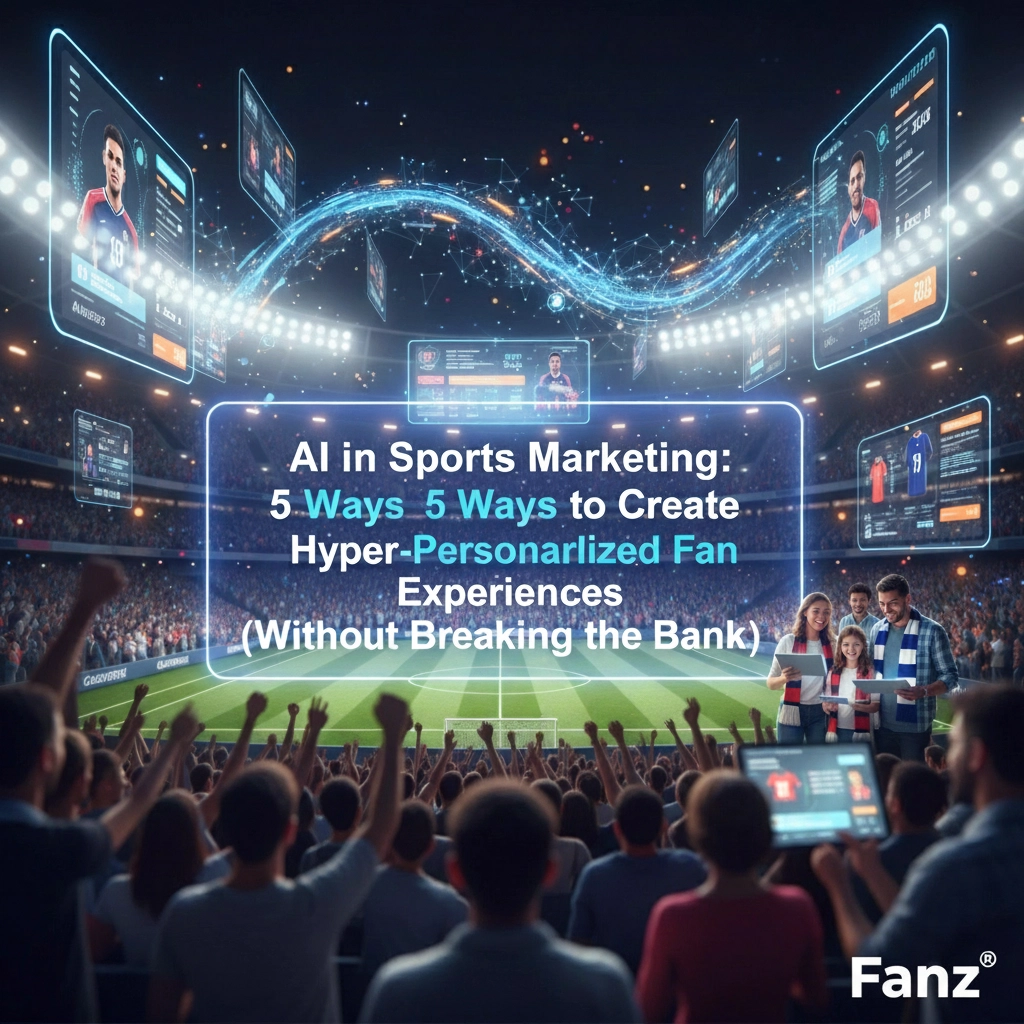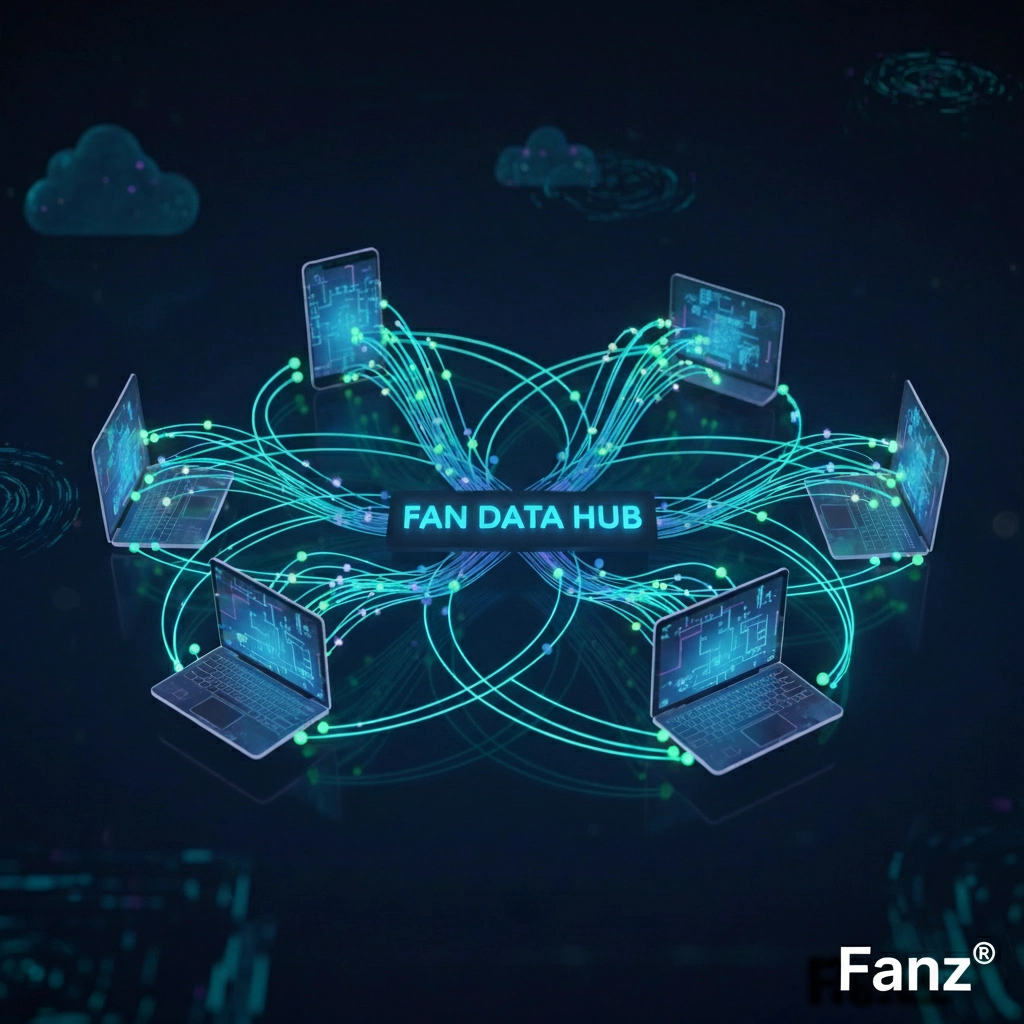
Sports marketing has entered a new era where generic campaigns are losing ground to hyper-personalized fan experiences. The shift isn't just about following trends: it's about meeting fans where they are and delivering content that resonates on an individual level. The good news? You don't need a Fortune 500 budget to get started with AI-powered personalization.
Modern sports fans expect experiences tailored to their preferences, viewing habits, and team loyalties. They want to receive updates about their favorite players, get notifications about games they actually care about, and see content that matches their specific interests. This demand for personalization has created opportunities for sports organizations of all sizes to leverage AI technology without breaking the bank.
1. Start with Smart Data Integration
The foundation of cost-effective personalization begins with connecting the data you already have. Most sports organizations sit on goldmines of fan information scattered across different platforms: ticketing systems, mobile apps, social media interactions, email campaigns, and merchandise purchases. The key is bringing these data points together to create comprehensive fan profiles.
Rather than investing in expensive new systems, focus on integrating existing touchpoints. Start small by connecting two or three data sources, such as your ticketing platform and email system. This combined data allows you to create basic segmentation that can immediately improve your marketing effectiveness.
For example, fans who regularly attend weeknight games likely have different preferences and availability than those who only show up for weekend marquee matchups. By identifying these patterns in your existing data, you can tailor communication timing, content types, and promotional offers accordingly.

As you prove value with initial integrations, gradually expand to include additional touchpoints like app usage patterns, social media engagement, and in-venue purchase behavior. This approach allows you to build sophisticated fan profiles incrementally without requiring significant infrastructure investments upfront.
2. Deploy AI-Generated Content at Scale
One of the most budget-friendly AI applications involves automated content creation that can save hundreds of hours while improving fan engagement. AI systems can analyze game footage, social media activity, and fan interaction data to identify key moments and automatically compile them into personalized content packages.
Consider how AI can create custom highlight reels featuring each fan's favorite players or preferred types of plays. Instead of producing one generic highlight package, you can generate dozens of variations tailored to different fan segments: defense-focused fans get more defensive highlights, while fans of specific players see more of their preferred athletes.
The NBA demonstrated this approach effectively during the 2023 playoffs by producing over 50,000 unique video clips within 48 hours. These clips were then served through personalized email campaigns and app notifications, resulting in significantly higher engagement rates compared to generic content distribution.
Beyond video content, AI can generate personalized news feeds that deliver articles and updates filtered by specific teams, players, or storylines each fan follows. This approach transforms existing content into multiple personalized experiences without requiring additional content creation resources.
3. Leverage Timing-Optimized Delivery
Understanding when fans are most likely to engage can dramatically improve results without additional content costs. AI algorithms can analyze individual usage patterns to determine optimal delivery times for each fan, making the same piece of content significantly more valuable through strategic timing.
Real-time engagement strategies take this concept further by delivering personalized messages and offers at precisely the right moment to maximize impact. During major sporting events, AI models can evaluate massive amounts of data to tailor push notifications about player statistics, merchandise promotions, and match reminders specific to individual preferences.
The 2022 FIFA World Cup provided a compelling case study, where AI systems processed over 100 million data points to deliver personalized notifications. This approach resulted in a 43% boost in in-app engagement compared to generic broadcast messaging.
Timing optimization also applies to promotional campaigns. Instead of sending the same offer to all fans simultaneously, AI can determine when each individual fan is most likely to make a purchase decision and deliver targeted promotions accordingly.
4. Implement Predictive Analytics for Targeted Offers
Machine learning enables sports organizations to anticipate fan behavior and preferences before they're explicitly expressed. This predictive capability allows for highly targeted marketing campaigns that maximize conversion rates while minimizing wasted advertising spend.
FC Barcelona's AI personalization engine serves as an excellent example, making over 1,000 personalized recommendations per second during match days. This system resulted in email open rates increasing by 40% and game day merchandise sales rising by 22%.

The shift from demographic segmentation to individual-level behavior prediction represents a critical advancement in cost-effective marketing. Rather than creating broad campaigns for large demographic segments, predictive analytics allows you to deliver precise offers to smaller groups with much higher conversion probabilities.
This approach proves particularly valuable for ticket sales, merchandise promotions, and premium experience upsells. By identifying fans most likely to respond to specific offers, you can focus marketing resources on high-probability prospects while avoiding message fatigue among less interested segments.
Sports betting platforms like FanDuel and DraftKings have demonstrated the power of predictive targeting, with DraftKings reporting a 29% increase in live-bet interactions after deploying AI tools that send customized betting prompts triggered by specific in-game actions.
5. Create Always-On Digital Touchpoints
Interactive features and continuous optimization systems don't require massive upfront investments but can significantly deepen fan connections over time. The key lies in implementing systems that become more effective through ongoing use, creating compounding value without additional investment.
These always-on touchpoints include personalized app experiences, dynamic website content, and adaptive social media interactions. By constantly refining algorithms based on engagement metrics and conversion rates, these systems improve performance automatically.
The Golden State Warriors achieved a 35% increase in ticket sales through their AI-driven personalization strategy by focusing on integrating existing data sources and delivering targeted experiences at critical moments in the fan journey. Their approach centered on identifying high-intent moments: such as when fans browse ticket pages or engage with specific social media content: and delivering personalized offers at these crucial decision points.
Continuous optimization means these systems learn from every interaction, gradually becoming more accurate in their predictions and more effective in their targeting. This creates a virtuous cycle where improved performance justifies additional investment in platform capabilities.
Making AI Accessible for Every Sports Organization
The beauty of modern AI solutions lies in their accessibility. Platforms like Fanz are democratizing these technologies, making it possible for sports organizations of all sizes to implement sophisticated personalization strategies without requiring extensive technical expertise or massive budgets.
The key to success involves starting with one or two high-impact applications and expanding based on proven results. Focus on areas where you already have data and existing fan touchpoints, then gradually add complexity as you demonstrate value and build confidence in AI-driven approaches.
By taking this measured approach to AI implementation, sports organizations can create meaningful, personalized fan experiences that drive engagement, loyalty, and revenue growth: all while maintaining budget discipline and operational efficiency.
Share this Blog LinkedIn | Facebook | Instagram | X
Hashtags
#Motivation #Branding #Strategy #Marketing #AdvertisingAndMarketing #DigitalMarketing #Innovation #NIL #Esports #Fanzus #AIinSports #SportsMarketing #FanEngagement #Personalization #PredictiveAnalytics #ContentAutomation #DataIntegration #MachineLearning #SportsTech #MarTech #DynamicContent #TimingOptimization #TicketSales
Contact
Dan Kost, CEO
info@fanz.us
970-545-8881
